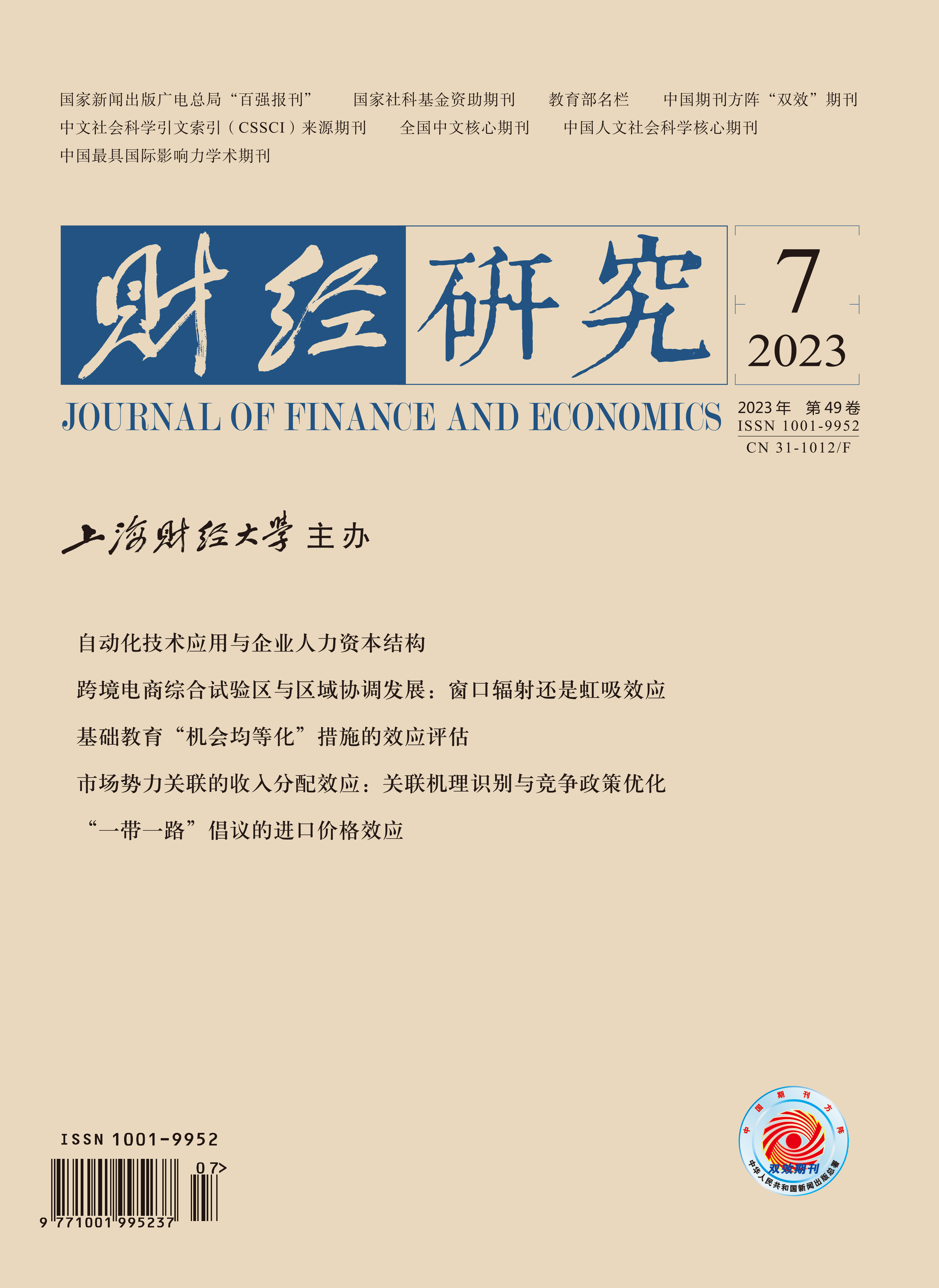工业自动化技术的快速发展究竟会带来“人机共存”还是“机器换人”?已有学者围绕这一话题对中国工业机器人应用与就业的关系展开了讨论。然而在全球价值链和各国竞相发展人工智能产业的背景下,参与全球化生产分工使得国外机器人应用也会对中国就业产生影响。文章先构建了多国多部门的李嘉图贸易模型,通过对劳动力就业变化进行结构分解,分析国内外机器人应用对中国产生的就业效应。然后利用人口普查微观数据、IFR机器人数据和WIOD投入产出数据,基于Shift-Share思想检验了国内外工业机器人应用对我国地级市制造业劳动力就业的影响。基准回归和稳健性检验的估计结果表明,国内机器人产生的补偿效应要大于替代效应,因而会促进地区制造业劳动力就业,而国外机器人经中间品贸易渠道会对制造业就业产生补偿效应,经最终品贸易渠道会对制造业就业产生替代效应。此外,异质性分析发现,国内外工业机器人应用对就业的影响存在个体异质性、行业异质性以及区域异质性。进一步研究得出,国外机器人应用主要是通过改变地区的出口贸易结构而影响劳动力就业。文章的研究结论对客观评估机器人与劳动力就业的关系、制定机器人产业发展政策和提高制造业国际分工地位具有一定的指导意义。
国内外工业机器人应用对制造业就业的影响分析
摘要
参考文献
摘要
关键词
3 孔高文,刘莎莎,孔东民. 机器人与就业−基于行业与地区异质性的探索性分析[J]. 中国工业经济,2020,(8):80−98. DOI:10.3969/j.issn.1006-480X.2020.08.006
4 李磊,王小霞,包群. 机器人的就业效应:机制与中国经验[J]. 管理世界,2021,(9):104−118. DOI:10.3969/j.issn.1002-5502.2021.09.023
8 Acemoglu D, Restrepo P. The race between man and machine: Implications of technology for growth, factor shares, and employment[J]. American Economic Review,2018,108(6): 1488−1542. DOI:10.1257/aer.20160696
9 Acemoglu D, Restrepo P. Robots and jobs: Evidence from US labor markets[J]. Journal of Political Economy,2020,128(6): 2188−2244. DOI:10.1086/705716
10 Adão R, Kolesár M, Morales E. Shift-share designs: Theory and inference[J]. The Quarterly Journal of Economics,2019,134(4): 1949−2010. DOI:10.1093/qje/qjz025
11 Artuc E, Bastos P, Rijkers B. Robots, tasks and trade[R]. Discussion Paper DP14487, 2018.
12 Autor D H, Dorn D, Hanson G H. The China syndrome: Local labor market effects of import competition in the United States[J]. American Economic Review,2013,103(6): 2121−2168. DOI:10.1257/aer.103.6.2121
13 Autor D H, Salomons A. Is automation labor-displacing? Productivity growth, employment, and the labor share[R]. NBER Working paper No.w24871, 2018.
14 Caliendo L, Parro F. Estimates of the trade and welfare effects of NAFTA[J]. The Review of Economic Studies,2015,82(1): 1−44. DOI:10.1093/restud/rdu035
15 Carbonero F, Ernst E, Weber E. Robots worldwide: The impact of automation on employment and trade[R]. IAB Discussion Paper 202007, 2020.
16 Dauth W, Findeisen S, Suedekum J, et al. The adjustment of labor markets to robots[J]. Journal of the European Economic Association,2021,19(6): 3104−3153. DOI:10.1093/jeea/jvab012
17 Diaz Pavez L R, Martínez-Zarzoso I. The impact of local and foreign automation on labor market outcomes in emerging countries[R]. Cege Discussion Papers No.423, 2021.
18 Eaton J, Kortum S. Technology, geography, and trade[J]. Econometrica,2002,70(5): 1741−1779. DOI:10.1111/1468-0262.00352
19 Faber M. Robots and reshoring: Evidence from Mexican labor markets[J]. Journal of International Economics,2020,127: 103384. DOI:10.1016/j.jinteco.2020.103384
20 Faber M, Sarto A, Tabellini M. Local shocks and internal migration: The disparate effects of robots and Chinese imports in the US[R]. IZA institute Discussion Paper No.14623, 2021.
21 Feenstra R C, Hanson G H. Globalization, outsourcing, and wage inequality[J]. The American Economic Review,1996,86(2): 240−245.
22 Goldfarb A, Trefler D. AI and international trade[R]. NBER Working Paper No.w24254, 2018.
23 Graetz G, Michaels G. Robots at work[J]. The Review of Economics and Statistics,2018,100(5): 753−768. DOI:10.1162/rest_a_00754
24 Stemmler H. Does automation lead to de-industrialization in emerging economies? Evidence from brazil[R]. Cege Discussion Papers No.382, 2019.
引用本文
林欣, 李春顶. 国内外工业机器人应用对制造业就业的影响分析[J]. 财经研究, 2023, 49(7): 19-33.
导出参考文献,格式为:
上一篇:金融科技缓解农户财富不平等研究





 5744
5744  5920
5920

